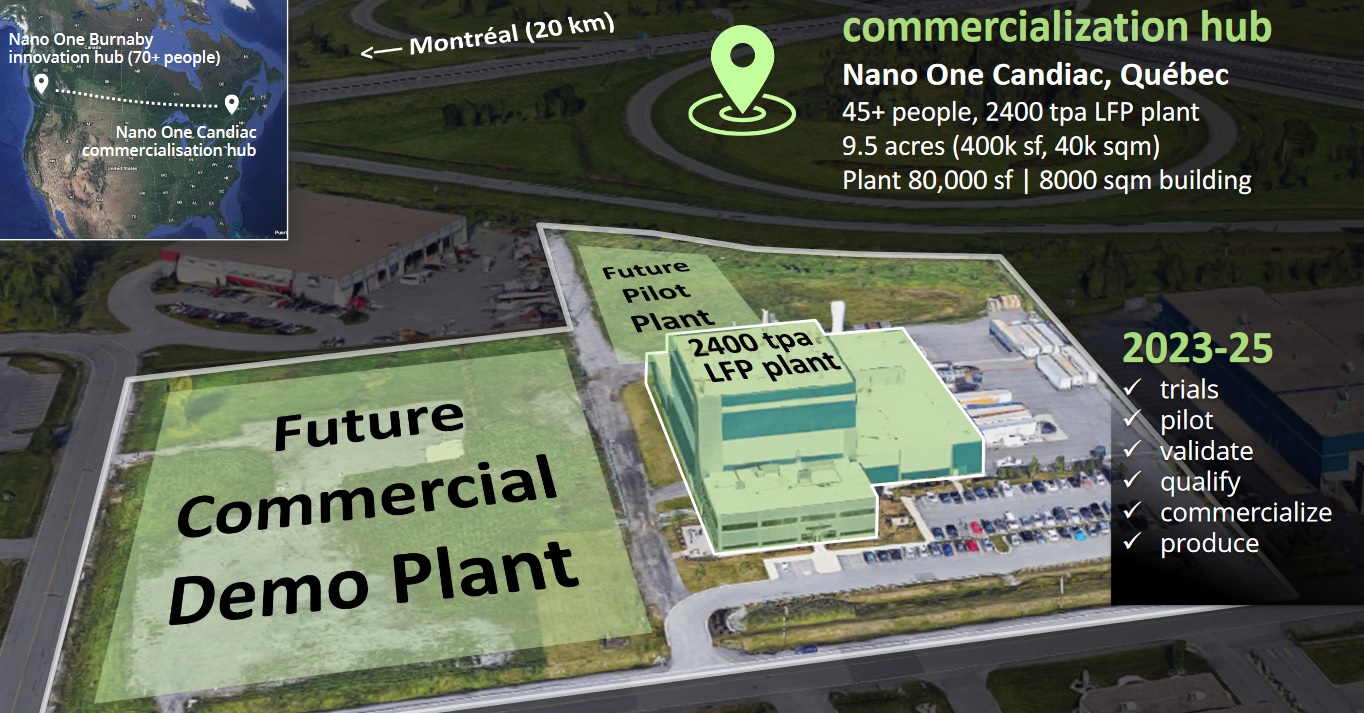Collaboration Deal with Sumitomo, Nano One to Boost LFP Cathode Production in Canada
Nano One Materials Corp. (TSX: NANO) operates the sole North American lithium iron phosphate (LFP) production facility located in Candiac, Quebec, with plans to convert the existing facility to the One-Pot process for production up to 2,000tpa by the end of 2024. The company will expand the production in Quebec to meet demand and its business model incorporates licensing and joint ventures for global expansion.
In an announcement on September 14, 2023, Nano One reported significant progress in demonstrating full commercial scale volumes from the Candiac facility. The company states:
“Recent One-Pot trials at the Candiac plant have yielded LFP at commercial scale with results mirroring lab performance. Transitioning to full commercial size reactors, Nano One’s LFP is ready for Q4 customer evaluations. Moreover, installation and optimization of the 200tpa reactors are ongoing.”

Additionally, Nano One recently announced a collaboration agreement with global cathode materials giant Sumitomo Metal Mining on September 25, 2023. This announcement included a strategic equity investment of C$16.9 million commitment and will undoubtedly provide potential opportunities in sales, licensing, and partnership opportunities. Notably, Sumitomo is a supplier of materials to Panasonic which in turn supplies Tesla with battery cells which shows the quality of their client lists.
Sumitomo’s established role in the sector as a leading miner, refiner, and cathode active materials producer solidifies the significance of this collaboration.
With global trends leaning towards the electrification of transport and clean energy, the demand for batteries and cathode materials is surging. Forecasts predict the cathode market in North America and Europe alone to reach US$85 billion by 2035, presenting unprecedented opportunities for emerging market players.
Nano One’s Business Strategy
While Nano One’s strategy remains versatile, the primary focus will be LFP production initially in Canada at the Candiac facility. Its business model includes licensing and joint ventures with partners for global expansion in jurisdictions like the US, Europe, and Asia.
In Conclusion
Nano One’s evolution from a minor participant to a significant player in the cathode materials sector is evident. Collaborations with industry leaders like Sumitomo, Rio Tinto and VW place them prominently on the map. The company currently boasts a market cap of C$320 million.